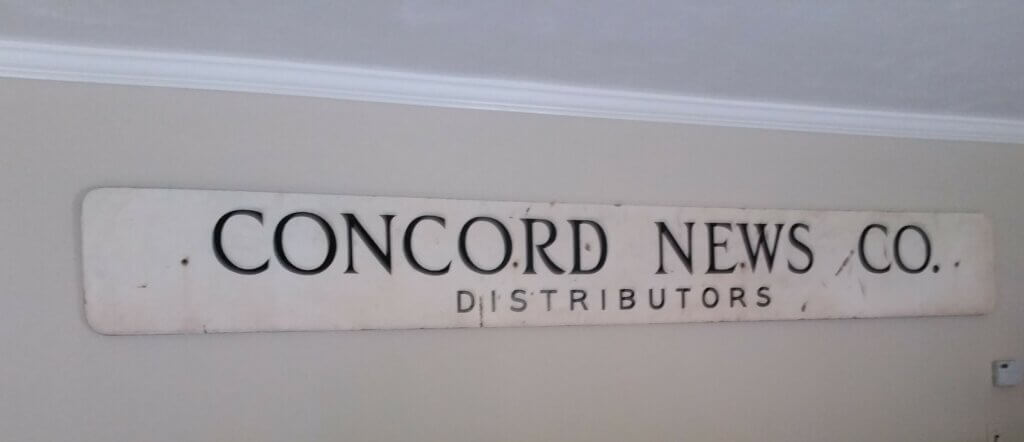In the 1950s and 1960s, when it came to news, gossip and advertising, newspapers reigned supreme.
Cities big and small printed morning and evening editions of popular titles, feeding the country’s desire to remain current about politics, sports, arts and so much more.
Children’s sections engaged young readers with games and activities. Women’s pages boasted the latest fashions and recipes. Advice columnists like Dear Abby answered pressing questions about anything from skin care to relationships.
The funnies, or cartoons, along with word puzzles and the television schedule drew in the entire family.
In Concord, out-of-town newspapers’ journeys to homes began with Ernie I. Toombs, the owner of Concord News Company from 1948 to 1978.

Toombs, sometimes called E.I., retrieved Boston and New York newspapers bound in wire from the train at Concord’s downtown depot twice a day, his daughter Nancy Beach recalled.
A few papers went into a coin honor box at the station. Toombs took bundles to locations around town like Snow’s and Richardson’s.
“I wish you could have seen the setup,” Beach said. His office at the depot had a back door for getting the bundles from the train and they went out through the front.
“He had a motorcycle with a sidecar,” she said. He put the papers and the bottom of the sidecar and Nancy sat on top of them.
“He would hit the tracks,” the motorcycle would pop into the air, “and I’d go whoo!” she said. Her mother made him get rid of the transportation at some point.
At the end of the delivery, she and her dad would hit Snow’s, sit at the soda counter, and have a vanilla Coke.
He kept the records for Concord News by hand, written in a ledger she still has.

Delivering to stores was just part of the distribution business.
“Dad’s philosophy was he needed paperboys everywhere,” Beach said.
But local kids couldn’t afford to buy bicycles. “He would buy the bike and the basket and he would take a little bit of their pay each week,” she said, providing a lesson in paying back loans as well as giving the boys a job.
In the early 1960’s, when the depot was renovated, Concord News Company lost its office. Toombs bought 194 Sudbury Road, just across the tracks. He rented out the house as retail space and an apartment and built a 3,400 square foot cinderblock building for his business and a clothing store.
“We all went in there to buy our jeans,” Beach said.
The family still owns the building. After her father died, the house was sold and torn down for new retail space.
After renovating the cinderblock building, the family rented it to a printing business.
“It’s been the same print shop for over 40 years,” Beach said. “It’s just amazing to me.”
Along the way, the owners of the business bought a franchise and changed the name to AlphaGraphics.
Changes are coming. The print shop is moving.
“We’re looking for somebody to rent it,” Beach said.
At the West Concord tracks
Around 1962, two boys posed in front of the crossing tender’s shanty in West Concord. The younger boy, one of the Sebrings, stands with another boy, who has a bicycle with newspapers. Could he be one of the beneficiaries of the bike ownership program supported by Ernie Toombs?

Rick Kfoury, vice president of the Boston & Main Railroad Historical Society, provided information about these tiny buildings.
The crossing tender moved the gates with a crank lever, seen at the bottom right of the photo, which usually controlled the gates on both sides of the road via an underground linkage.
Most crossing gates were replaced with unmanned equipment and the workers and shanties were eliminated by the 1980s. North of Boston, with busy crossings of the MBTA lines, a few shanties remain and the crossing tender stands in the road with a sign or flag for extra protection.
When it was dark, the shanty tender hung different colored kerosene lights on the gates, said Paul Sebring, who found the photo in a collection of slides their father took.
The photo was probably taken the middle of Commonwealth Avenue, he said.






